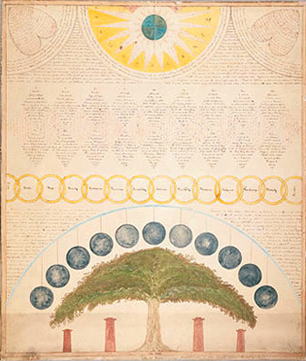We’re in the final stretch for the house renovations, but after 6 months of non-stop noise and an ever-shrinking living space, I knew I needed to get away. So last week I drove to the John C. Campbell Folk School in North Carolina to participate in their Shaker Week.
If you’re unfamiliar with the Folk School, they offer weekend and week-long courses for adults. You can even stay on site and have all of your meals provided for. Originally opened in the 1920s, the school was created so that farmers and homesteaders could learn a traditional craft or trade as a way to earn extra cash in the winters. People looking to learn a new hobby in their retirement also come to the Folk School. They offer classes in homesteading, mushroom foraging, blacksmithing, wood working, jewelry making, cooking, etc.

So if you’d like to embrace a simple-living lifestyle but don’t feel like you have the skills or know-how, you can do a one-week course at the Folk School and walk away knowing how to make a craft you can make money from if you choose. I had never done water color before, but now I have not only an entire week of instruction, but all of the brushes, paints, and supplies needed to keep doing it.
Going into the week, I didn’t really know much about the Shakers. When I was in school we were taught that they were a type of Puritans that had died out because their religion didn’t allow people to marry and have children. In truth, the Shakers were a prosperous and successful community. They fit a need in society, allowing women a way to leave unhappy marriages, and offering a refuge for orphans and unwanted children. It may be hard for some to imagine the appeal of a celibate lifestyle, but I have definitely met people who prefer the companionship of living with a group of people without the pressures of a sexual relationship.

In the 1950s the Shakers decided that they would not be accepting any new members. Although their community had lasted for hundreds of years, they felt that the world had changed too much and was no longer conducive to the Shaker lifestyle. They also found that new converts seemed to be more interested in free food and lodging than they were in really embracing the Shaker lifestyle. As of this writing, there are still two Shakers left living at Sabbath Day Lake in Maine.
Although technically a Puritan sect, they created beautiful paintings and furniture. It’s hard to imagine it in today’s context, but in the 1700s when the Shakers began, Puritanism was the more fun and optimistic religious option available. A Shaker life was full of singing, dancing, and hearty meals harvested from the garden. It is true that they frowned on ostentatious displays of wealth. It was not just considered tacky, but also immoral, to spend money on decorative non-necessities while other hardworking people died of starvation or cold. The exception to the rule were their Spirit Drawings.
The Shakers were practicing mediumship long before the Fox sisters. Mediumship, channeling, and guiding uncrossed spirits to the afterworld was a major part of their spiritual practice. Shakers, especially young women, would go into a trance state and then draw what they saw in the hereafter. Including labels, written explanations, and large blocks of text were not unusual. Symbols borrowed from Free Masonry, Hermeticism, and other occult sources are readily apparent in their work.

What I really enjoyed about this art form is that you do not merely glance at the work and then move on. By integrating text and intricate symbols, the viewer is invited to stand and ponder over the piece. Pieces were often made for a specific person in mind, making for a highly personal gift the likes of which we simply don’t see anymore.
It may at first be shocking to see something so occult associated with the Shakers, but trance mediumship, channeling, “healing hands”, and a spiritual ability known as the “sweeping gift”, were major parts of their practice. This was a group where women especially could develop spiritual gifts and have an equal role in leadership.
The Shakers were founded by a woman known as Mother Ann in the 1740s. Soon after her death it was decided by her followers that Mother Ann had been the Second Coming. They then published a book making their arguments for why this was the case as well as including ample “biblical evidence”. Known as the “Sacred Roll”, a copy of the book was sent to all of the world’s leaders. Although it was expected that this book would cause an end to war and wealth inequality, that was simply not the case.
The Shakers came to experience push-back from the community due to their more occult-seeming practices. This led to them closing their once public services to the community and becoming increasingly private about their ways. Honestly, thinking about the push-back I have received for my own spiritual beliefs, I really wouldn’t blame anyone for doing the same.
If you are looking for a guide or framework for a simple living practice, the Shakers provide ample inspiration. Most utopian societies only lasted for a single generation. The Shakers hold the record for being the most successful intentional community, having only ended by their own decision. Much can be gathered from their spiritual practices, artwork, and homesteading operation. Personally, this is a group that I will be researching more as I continue to hone my simple living practices.


